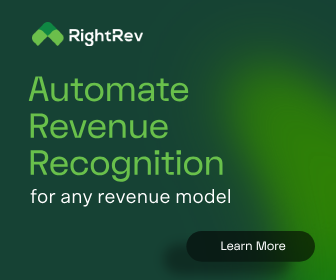Controllers Council recently held a panel discussion on How to Improve Cash Flow Forecasting, sponsored by BILL.
Our expert panelists were Philip Peck and Joe Fleischer. Philip Peck is Vice President Advisory services, and Finance Transformation practice at Peloton Consulting Group. Joe Fleischer is webinar content marketing manager for BILL with more than 16 years experience, including CFO.com.
BILL is a leading financial operations platform for small and midsize businesses (SMBs). As a champion of SMBs, BILL automates the future of finance so businesses can thrive.
Following are key takeaways to this discussion. If you are interested in learning more, view the full webinar archive video here.
Cash flow forecasting is the process of estimating and predicting the amount of cash, inflows and outflows, that a business is expected to generate over a period of time, three to six months, where organizations often have a rolling horizon, rolling 13 -week standard cash forecast. This projection helps the businesses anticipate their needs and plan accordingly. There are different time horizons, which is relevant when we talk about cash forecasting.
What are the most typical reasons that businesses lose visibility into and control over cash flow?
Let’s just start with the typical reasons that organizations lose visibility into and control:
- Inaccurate forecasting: if you’re relying on an inaccurate forecast, and presumably that’s going to really start around your planning, then you’ll misjudge the future anticipated cash flows and outflows leading to unexpected shortages and surpluses.
- Poor management of payables, receivables, and employee expenses: If you don’t have good fundamental core practices around tracking and management of expenses, how you deal with invoice payments, following up on outstanding receivables, the criteria around tiering all your different customers, that can contribute to cash flow forecasting problems.
- Insufficient monitoring of cash flow: If an organization doesn’t intentionally, systematically, regularly monitor and analyze cash flow statements, they could be completely overlooking or be unaware of warning signs.
- Over-reliance on key customers: If we’re relying on a single customer or a few key clients, dynamics in their business and their ability, say, to pay us can have significant impacts on our ability to then manage and forecast around cash flow.
Additional reasons companies lack visibility into and control over cash flow include:
- Seasonal fluctuations
- Poor inventory management
- Unexpected expenses
- Inordinate overhead costs
How can finance leaders maintain the integrity and accuracy of data that underlines cash flow forecasts?
I strongly advocate starting with a baseline, a current state assessment. Organizations need to understand the starting point for evaluating the integrity and accuracy of the data supporting their cash flow forecasts. So that assessment needs to cover all aspects about the data, availability, quality, relevance, materiality, volatility, and other attributes around the data. That provides a basis to understand pain points, like where are we really challenged? What’s the long pole in the tent? Where are there improvement opportunities around the data itself? And then key considerations. Those could be systems considerations, definitions, terminology, whatever those considerations are. With that baseline in mind then, I would advocate an organization needs to establish a real future state vision around the data and its support for the cashflow forecast, and then a roadmap of improvements. So being able to analyze and synthesize that baseline, then establish the vision, and then a roadmap for improvement. And that’s probably going to need to cover process, technology, people in organization, and then elements obviously about the data itself.
What scenarios can finance leaders plan for when forecasting cash flow?
At the core, I think it’s important to be able to have foundational scenarios (a high scenario, a base case scenario, and a pessimistic scenario). On the optimistic or the high one here, it’s where you’re looking at the totality of the forecast and you’re leaning positive. You are kind of leaning into the wind in a good way. So, this could be strong sales growth. This could be our customers are paying on time or slightly better than our historical trend. We’re able to manage expenses and we very actively don’t have any surprises. It’s a best-case scenario and gives us some identification of opportunities for growth, investment and optimizing cash.
The base case is the most likely based on current conditions, market trends, business performance, our fundamental appreciation for all the drivers and the data that feed that cashflow forecast. It’s really at its core, it’s the foundation. It’s our most realistic estimate that we’re going to use for financial planning and decision-making.
The pessimistic is sales are not as strong as anticipated. Our DSO is ratcheting up. We’re getting some unexpected expenses. The swirl of events, It’s kind of, wow, it’s pessimistic. It’s a little bit dark. Here we’re able to say then, what would be the impact on our cash flow forecast? This helps us when we think about developing contingent plans to mitigate the adverse effects of that happening.
Other scenarios include:
- New strategic initiatives
- Macroeconomic conditions such as market downturns
- Supply chain disruptions
- Significant capital expenditures
- Insufficient liquidity
- New regulatory or compliance requirements
How can finance leaders apply insights from previous cash flow forecasts to guide future forecasts?
To view answers to this questions and the complete webcast, download full webinar here.
ABOUT THE SPONSOR:
BILL (NYSE: BILL) is a leading financial operations platform for small and midsize businesses (SMBs). As a champion of SMBs, we are automating the future of finance so businesses can thrive. Our integrated platform helps businesses to more efficiently control payables, receivables and spend and expense management. Hundreds of thousands of businesses rely on BILL’s proprietary member network of millions to pay or get paid faster. Headquartered in San Jose, California, BILL is a trusted partner of leading U.S. financial institutions, accounting firms, and accounting software providers. For more information, visit bill.com.




